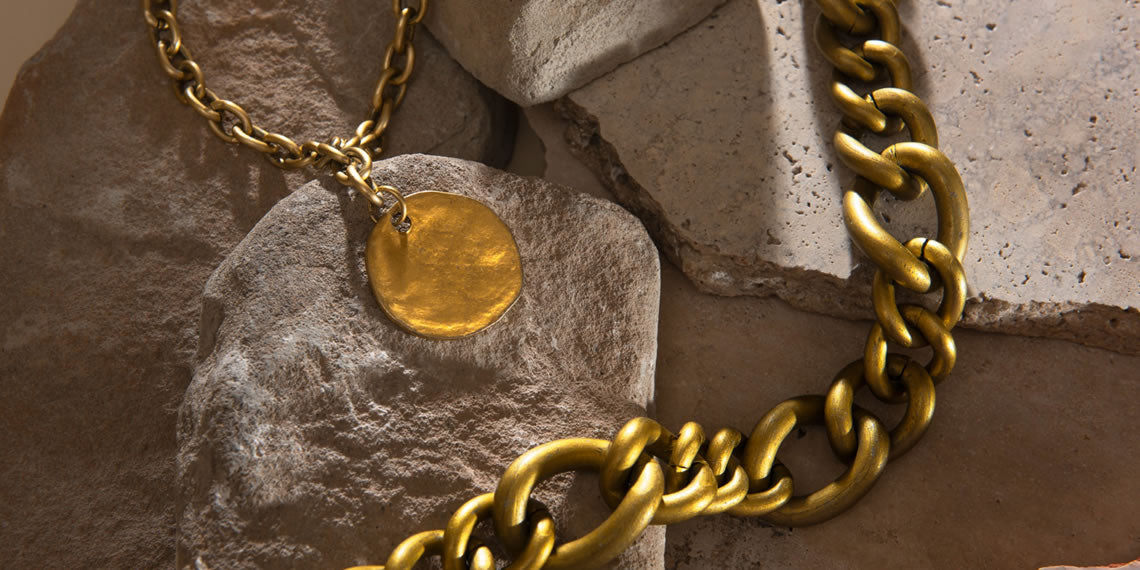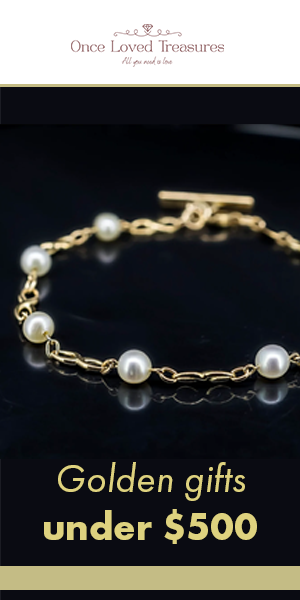
Is It Worth Buying Gold Plated Jewellery? Understanding Value and Quality
When you're considering the addition of a little shine to your jewellery collection without the hefty price tag, gold plated jewellery may come to mind. This type of jewellery involves a method where a thin layer of gold is applied to a base metal, often copper or silver, through electroplating. It offers you the glamour of gold at a more affordable price point. As the price of solid gold pieces continues to rise, the appeal of gold plated alternatives grows.
The value of gold plated jewellery isn't solely financial; it's also about versatility and fashion. While it may not have the same resale value as solid gold, its affordability means you can indulge in a variety of styles and designs to complement your wardrobe.
However, it's essential to weigh up both the aesthetic qualities and the longevity of the plating.
Understanding the quality and maintenance required to keep gold plated jewellery looking its best is crucial. While it gives you the coveted look of gold, remember that the layer of gold can wear away over time, potentially leading to the need for re-plating. Your lifestyle and how often you wear the pieces will play a significant role in determining their lifespan in your collection.
Understanding Gold Plated Jewellery
When you’re considering buying gold plated jewellery, it's important to know what it actually entails. This involves its definition and composition, the techniques used to plate the jewellery, and how it compares to other types of gold jewellery.
Definition and Composition
Gold plated jewellery features a base metal, such as copper, nickel, or an alloy, coated with a layer of real gold. This is achieved through electroplating, where an
Gold Plating Techniques
Electroplated gold involves attaching the base metal to a rack and submerging it into an electroplating solution containing gold ions. By running a current through the solution, gold is deposited onto the metal's surface. Advanced technology has improved this process, enhancing the quality, durability, and tarnish resistance of the gold plated jewellery. However, the thickness can affect how long the gold layer lasts before it begins to wear.
Comparing Gold Plated to Other Types
Gold plated jewellery is more affordable than solid gold jewellery but less durable due to the thin gold layer. In contrast, gold filled jewellery contains a thicker layer of gold bonded to the base metal, usually a percentage of the item's total weight. Gold vermeil is a variety that uses sterling silver as the base and features thicker plating, usually 2.5 microns or more. Each type has its own balance of real gold content, quality, and price, impacting its wearability and how it may react with your skin over time.
Advantages and Disadvantages
When considering gold plated jewellery, your key considerations should include cost effectiveness, durability, and style versus the risk of tarnishing and potential skin irritation.
Pros of Choosing Gold Plated
Gold plated jewellery is a cost-effective alternative to solid gold, offering a luxurious look without the hefty price tag. Many find it an affordable way to follow current trends and enjoy a versatile array of designs. It's relatively durable and can be a suitable choice for people with an active lifestyle due to its resilience to wear off as compared to some other decorative coatings.
- Affordability: More accessible to a wider audience.
- Design Versatility: A vast array of styles and trends to choose from.
- Durability: Tends to be more durable than other types of plated jewellery.
Cons of Gold Plated Jewellery
Though it's durable, gold plated jewellery can still tarnish and fade over time, especially if exposed to harsh chemicals or worn frequently. The thin layer of gold may eventually wear off, revealing the base metal, which can lead to skin allergies or allergic reactions for some wearers. Additionally, it does not have the lifespan of solid gold and is more susceptible to scratches and corrosion.
- Tarnishing: Can lose its lustre and shine, requiring careful maintenance.
- Fading and Wear: The gold layer can fade or scratch, reducing its aesthetic appeal.
- Skin Reactions: Potential for skin irritation or allergic reactions if you have sensitivities.
| Pros | Cons |
|---|---|
| Affordability | Tarnishing |
| Design Versatility | Fading and Wear |
| Durability | Skin Reactions |
Care and Maintenance
Proper care and maintenance are crucial for extending the lifespan of your gold plated jewellery, ensuring it maintains its shine and durability. By taking these simple yet effective steps, you can protect your pieces against tarnish and damage.
Caring for Gold Plated Pieces
To maintain the appearance of your gold plated jewellery, it is essential to clean it regularly. Using a soft cloth, gently polish your jewellery to bring out the shine.
For deeper cleaning, lightly dampen the cloth with warm water and a bit of mild soap to wipe down the surface. Once cleaned, dry your jewellery thoroughly to prevent moisture from causing oxidation.
Remember to avoid harsh chemicals and abrasive materials that can strip away the gold layer.
Preventing Damage and Tarnish
To prevent tarnish and scratches, store your gold plated items in a dry area, away from direct sunlight and separate from other jewellery which might cause scratches.
It’s also advisable to keep them in a jewellery box lined with a soft fabric or in separate pouches to minimise exposure to air and moisture—both of which contribute to the tarnishing process.
Additionally, when applying lotions or sprays, like perfumes, ensure you do so before putting on your jewellery to reduce chemical contact.
Lastly, avoid wearing your gold plated pieces while swimming or during activities that will expose them to water or sweat, as this can accelerate wear and reduce the lifespan.
Making an Informed Purchase
When considering the purchase of gold-plated jewellery, you must weigh the authenticity and longevity against the price. Getting to grips with the quality and legal stipulations can help you discern whether it aligns with your value expectations and budget.
Assessing Quality and Value
Gold plated jewellery offers the appearance of real gold at a more affordable price, making it an attractive option if your budget does not stretch to solid gold.
The quality of gold plating can be measured by the thickness of the gold layer, and better quality is often found in items labelled as "heavy gold plated" which have a thickness of at least 2.5 microns. On the other hand, items with less than .5 microns thickness should technically be considered "gold electroplate".
When judging the value of gold-plated items, always check for clarity around the karat of the gold used for plating; 18k gold plated items, for instance, have a higher percentage of gold than those with lower karats and can offer a closer aesthetic and value point to 24k gold items, which is the purest form of gold available in jewellery.
Remember, however, gold-plated items are not an investment in the same sense as pure gold and are unlikely to retain significant monetary value over time.
Legal and Consumer Considerations
To protect your money and ensure you are not misled by fake gold claims, familiarise yourself with Code of Conduct by The Jewellers Association of Australia
Australia mandates that jewellery labels accurately reflect the product's content. Any gold-plated jewellery should truthfully specify if it is merely plated rather than implying it is solid gold.
From a consumer perspective, knowing whether gold plated is real involves understanding that while the outer layer is real gold, the base metal is not.
Although it won't match the price or value of solid gold jewellery, it can be cost-effective for fashion pieces.
Always check for a return policy or a warranty, as this can be indicative of the confidence the seller has in their product's quality.


